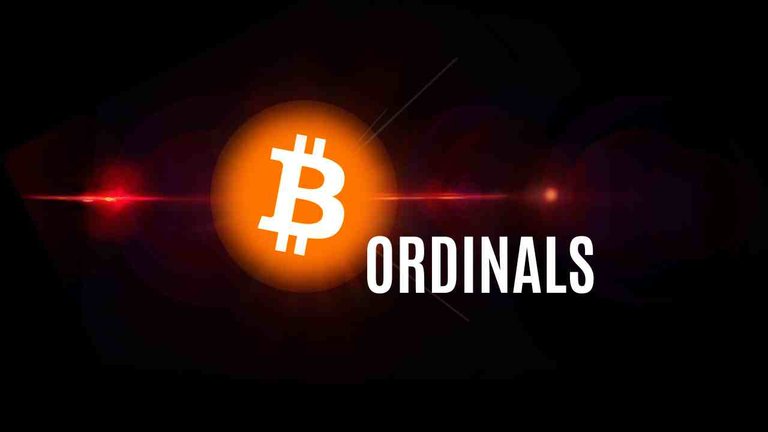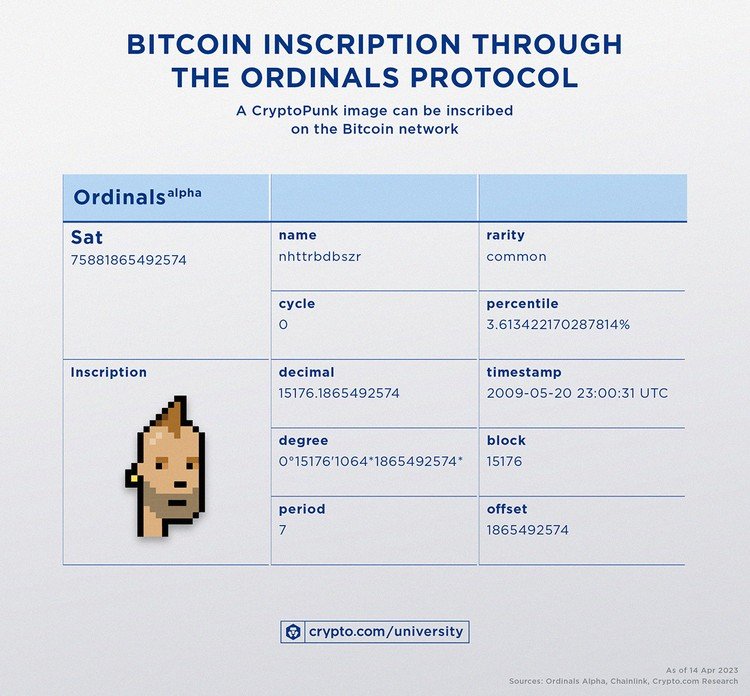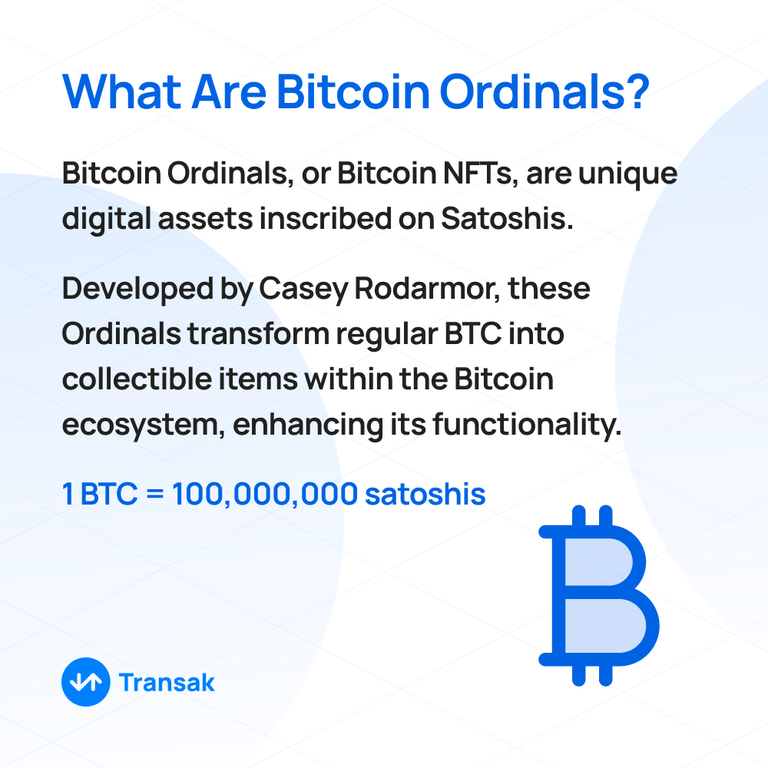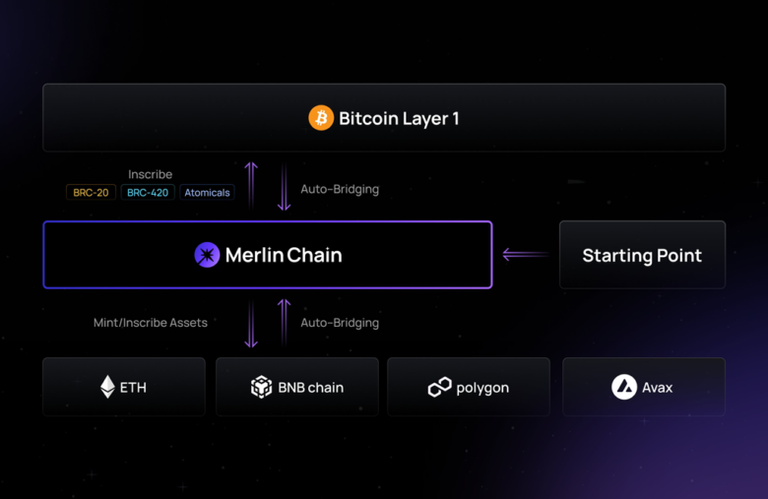NTFs have also swept Bitcoin's blockchain, but not only that, Merlin, a Bitcoin side chain, has also recently been born!

The Launch and Evolution of Ordinals Protocol
The Ordinals Protocol, launched in January 2023, has significantly expanded the Bitcoin ecosystem by enabling the inscription of images, art, videos, and other data onto individual fractions of Bitcoin, known as satoshis. Initially, the idea of integrating NFTs into the Bitcoin network seemed trivial to some. However, others recognized its potential, heralding Ordinals as a rejuvenation for the Proof-of-Work blockchain.
Transforming Bitcoin Beyond Digital Gold
Bitcoin, long seen as digital gold, now boasts a compelling new use case. Through Ordinals, Bitcoin transcends its role as a deflationary digital currency to become a medium for non-fungible digital art and music. This broadens the narrative and utility of Bitcoin significantly.
How Ordinals Work

Ordinals allow NFTs to be minted directly on the Bitcoin blockchain. This innovation is attributed to Casey Rodarmor, an ex-Bitcoin Core contributor. The protocol assigns serial numbers to satoshis, giving each a unique identifier trackable through transactions, and enabling users to attach additional data (inscriptions).
BRC-20 and the Rise of Token Standards
A few months after Ordinals' introduction, an anonymous developer launched BRC-20, a new token standard that facilitates minting and transferring fungible tokens on Bitcoin via a specific protocol. This standard, leveraging Ordinals inscriptions to embed token data directly onto the blockchain, rapidly gained traction. Notably, the memecoin moonshot BRC-20 Ordinals (ORDI) surpassed a market cap of $1 billion within a year.
Significant Milestones

According to Dune Analytics, approximately 66.5 million inscriptions have been made on satoshis since Ordinals' inception. Each Bitcoin comprises 100 million satoshis, indicating substantial room for growth in inscriptions. Ordinals-related fees have generated over $417 million.
Key milestones include the debut of the first Ordinals collection (Bitcoin Shrooms), the launch of the first inscription service (OrdinalsBot), and the success of ORDI. A Bitcoin NFT marketplace on Magic Eden has sparked intense trading of BRC-20 NFTs, reminiscent of Ethereum's 2021 NFT boom.
Comparing Bitcoin Ordinals with Ethereum NFTs
Ethereum NFTs are created using smart contracts based on standards like ERC-721 and ERC-1155, allowing data storage across different blockchain layers or even on the Interplanetary File System, enhancing functionality. In contrast, Bitcoin NFTs are recorded directly on the blockchain, leading to higher transaction fees since Ordinals are on-chain. Additionally, Bitcoin does not support smart contract royalties, unlike Ethereum.
Integration of Smart Contract Capabilities
Efforts are underway to introduce smart contract capabilities to Bitcoin through initiatives like covenants. Despite criticisms for introducing DeFi-like complexities and raising network fees, Ordinals and BRC-20 have been praised for reviving a builder culture on the PoW network, as noted by Vitalik Buterin.
Ordinals Beyond NFTs
Ordinals have found applications beyond NFT inscriptions. For instance, MicroStrategy is using the protocol to create tamper-proof, trustless decentralized identifiers (DIDs). This innovative use underscores the protocol's potential to preserve value better than previous NFT booms, given the immutability and scarcity of Bitcoin NFTs.
Record-Breaking Bitcoin NFT Sales
Bitcoin NFT sales set a new record in December 2023, surpassing $881 million in a single month, outpacing Ethereum and Solana NFTs. This achievement underscores the growing popularity and acceptance of Bitcoin-based NFTs.
The Rise of Bitcoin Layer-2 Solutions

The success of Ordinals is closely linked to the emergence of Bitcoin Layer-2 solutions, which aim to address the network's scalability issues and enhance utility. Similar to Ethereum's Layer-2 boom during the DeFi surge, Bitcoin Layer-2 protocols like Merlin Chain are gaining traction. Merlin Chain, utilizing ZK-Rollup technology, has become the largest Bitcoin sidechain with over $1 billion in Total Value Locked (TVL), surpassing Rootstock and Stacks.
Future Developments and Token Standards
The Merlin Chain team has developed BRC-420, a standard transforming Ordinals inscriptions into interactive assets known as recursive inscriptions. This standard introduces royalties, allowing developers to earn revenue from their creations. With the Bitcoin Layer-2 market valued at over $4.3 billion within 18 months of Ordinals' launch, Casey Rodarmor has much to celebrate. In April, he launched Runes, a protocol for fungible tokens on Bitcoin, signaling ongoing innovation in the ecosystem.